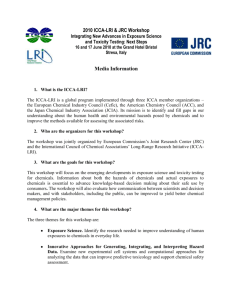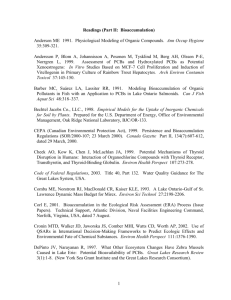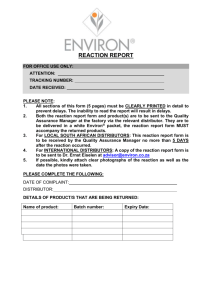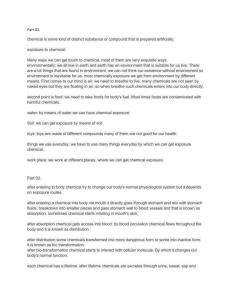2015 Foundational aspects of the concept of chemical
advertisement
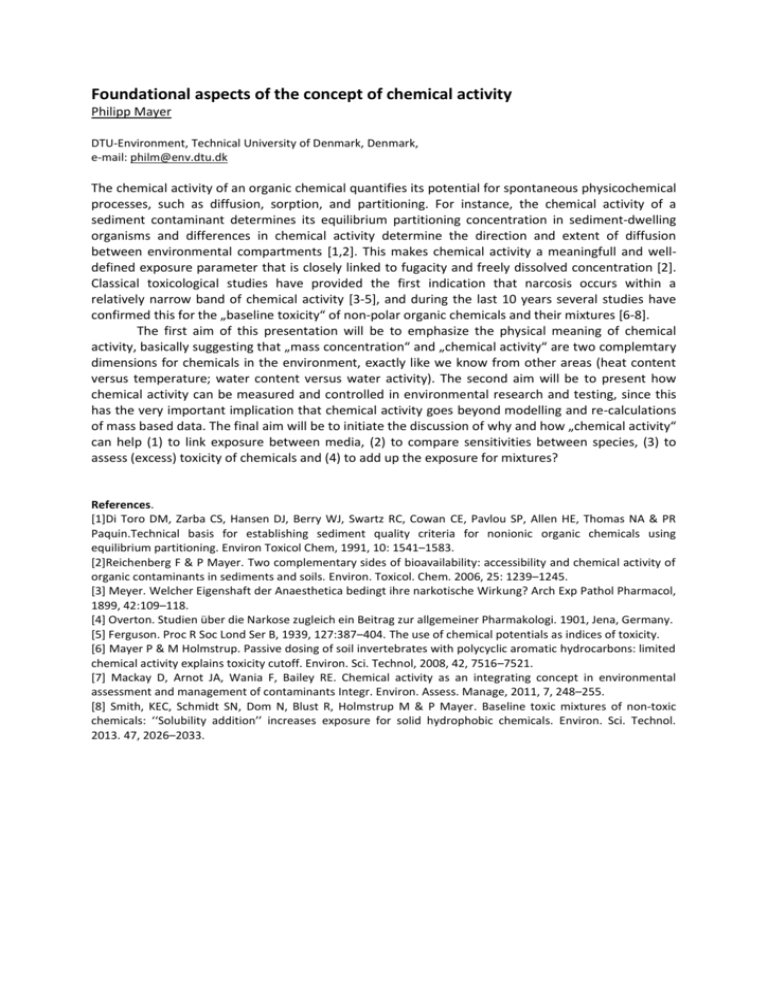
Foundational aspects of the concept of chemical activity Philipp Mayer DTU-Environment, Technical University of Denmark, Denmark, e-mail: philm@env.dtu.dk The chemical activity of an organic chemical quantifies its potential for spontaneous physicochemical processes, such as diffusion, sorption, and partitioning. For instance, the chemical activity of a sediment contaminant determines its equilibrium partitioning concentration in sediment-dwelling organisms and differences in chemical activity determine the direction and extent of diffusion between environmental compartments [1,2]. This makes chemical activity a meaningfull and welldefined exposure parameter that is closely linked to fugacity and freely dissolved concentration [2]. Classical toxicological studies have provided the first indication that narcosis occurs within a relatively narrow band of chemical activity [3-5], and during the last 10 years several studies have confirmed this for the „baseline toxicity“ of non-polar organic chemicals and their mixtures [6-8]. The first aim of this presentation will be to emphasize the physical meaning of chemical activity, basically suggesting that „mass concentration“ and „chemical activity“ are two complemtary dimensions for chemicals in the environment, exactly like we know from other areas (heat content versus temperature; water content versus water activity). The second aim will be to present how chemical activity can be measured and controlled in environmental research and testing, since this has the very important implication that chemical activity goes beyond modelling and re-calculations of mass based data. The final aim will be to initiate the discussion of why and how „chemical activity“ can help (1) to link exposure between media, (2) to compare sensitivities between species, (3) to assess (excess) toxicity of chemicals and (4) to add up the exposure for mixtures? References. [1]Di Toro DM, Zarba CS, Hansen DJ, Berry WJ, Swartz RC, Cowan CE, Pavlou SP, Allen HE, Thomas NA & PR Paquin.Technical basis for establishing sediment quality criteria for nonionic organic chemicals using equilibrium partitioning. Environ Toxicol Chem, 1991, 10: 1541–1583. [2]Reichenberg F & P Mayer. Two complementary sides of bioavailability: accessibility and chemical activity of organic contaminants in sediments and soils. Environ. Toxicol. Chem. 2006, 25: 1239–1245. [3] Meyer. Welcher Eigenshaft der Anaesthetica bedingt ihre narkotische Wirkung? Arch Exp Pathol Pharmacol, 1899, 42:109–118. [4] Overton. Studien über die Narkose zugleich ein Beitrag zur allgemeiner Pharmakologi. 1901, Jena, Germany. [5] Ferguson. Proc R Soc Lond Ser B, 1939, 127:387–404. The use of chemical potentials as indices of toxicity. [6] Mayer P & M Holmstrup. Passive dosing of soil invertebrates with polycyclic aromatic hydrocarbons: limited chemical activity explains toxicity cutoff. Environ. Sci. Technol, 2008, 42, 7516–7521. [7] Mackay D, Arnot JA, Wania F, Bailey RE. Chemical activity as an integrating concept in environmental assessment and management of contaminants Integr. Environ. Assess. Manage, 2011, 7, 248–255. [8] Smith, KEC, Schmidt SN, Dom N, Blust R, Holmstrup M & P Mayer. Baseline toxic mixtures of non-toxic chemicals: ‘‘Solubility addition’’ increases exposure for solid hydrophobic chemicals. Environ. Sci. Technol. 2013. 47, 2026–2033.
